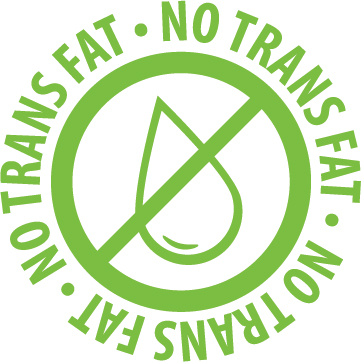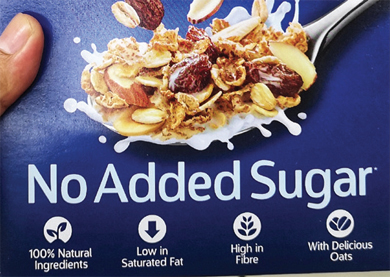Healthy Nutrition and Behavior:
Building the Cornerstone for Health

Both in the United States and around the world, the average number of calories people consume has increased significantly since 1970. As a result, hunger and malnutrition have declined, but rates of obesity have skyrocketed, leading to major increases in cardiovascular disease, diabetes, and other diet-related diseases. Today, far more people die of diseases associated with excess weight than of malnutrition.

1980
Establishing Dietary Guidelines
In 1980, the U.S. Department of Health and Human Services (HHS) and the U.S. Department of Agriculture (USDA) published Nutrition and Your Health: Dietary Guidelines for Americans to harmonize policies from the two leading federal departments and to help people make food choices that prevent diet-related chronic diseases and promote overall health. Subsequently mandated by the 1990 National Nutrition Monitoring and Related Research Act, the Secretaries of HHS and USDA must jointly issue a new set of dietary guidelines every five years that incorporate the latest evidence from the field of nutrition science. The Agriculture Act of 2014 extended the guidelines from all Americans two years and older to include infants from birth to their second birthday.

1990
Standardized Nutrition Labeling
The release in 1988 of the first-ever Surgeon General’s Report on Nutrition and Health underscored the strong contribution of dietary factors to major chronic diseases. The passage of the Nutrition Labeling and Education Act in 1990 instituted the standard nutrition label, similar to the one seen today. The U.S. Food and Drug Administration (FDA) mandated the display of a standardized Nutrition Facts panel on most packaged foods (with the most important nutrients listed and presented by individual serving). Manufacturers were also required to use common terms (such as “light,” “low-fat”) defined by the Secretary of Health and Human Services in health-related statements about the product. In January 2020, the FDA’s revised nutrition label went into effect, with greater focus on calories, serving sizes that reflect actual consumption amounts, a breakdown of added versus naturally occurring sugars, and changes in the nutrients listed on labels, among other changes.

1990s
Nutrition Science Helps Understand the “Double Burden”
Nutrition science and related policy have evolved significantly since 1970. Historically, research focused on individual nutrients and their deficiencies to prevent diseases such as malnutrition. Starting in the 1990s, however, examination of the effect of foods and overall eating patterns on health outcomes has proven invaluable in understanding how diet contributes to non-communicable diseases, including diabetes, cardiovascular disease, and cancers. The increase of non-communicable diseases globally, and particularly in low-income countries and communities where traditional malnutrition remains an issue, has resulted in research to understand the “double burden”—the co-occurrence of disease caused by poor diet quality and disease caused by imbalances in calories and nutrients—within communities, families, and even individuals.

2006
Reduced Use of Trans Fats
As of 2006, the U.S. Food and Drug Administration (FDA) required manufacturers to report trans fat content on food labels. Trans unsaturated fatty acids are made from partially hydrogenated oil and from some animal sources, increase one’s risk of disease, and were commonly used in processed foods prior to this FDA mandate. The requirement spurred product makers to shift to the use of other types of fats, leading to a decrease in the level of trans fats in American diets.


2006
Marketing Contributes to Childhood Obesity
The 2006 Institute of Medicine report on Food Marketing to Children and Youth: Threat or Opportunity? showed conclusively that the marketing of unhealthy food and beverages increases children’s intake and preference for high-calorie, low-nutrient foods and beverages, and such marketing contributes to poor diet and related chronic diseases in children and adolescents. Furthermore, young people with diet-related diseases such as high blood pressure, obesity, or type 2 diabetes are more likely to experience such risk factors as adults, increasing their risk of experiencing a stroke and heart attack. While the marketing of unhealthy food to children has evolved with technological advances and thus warrants further investigation, recent findings point to a higher prevalence of such advertising aimed at minority youth.

2010
Child Nutrition Programs
The Healthy, Hunger-Free Kids Act of 2010 allowed the U.S. Department of Agriculture (USDA) to make widespread reforms to childhood nutrition programs based on updated standards—the first time in over three decades. The legislation established policy and set aside funding for various USDA programs: the National School Lunch Program, the School Breakfast Program, the Summer Food Service Program, the Child and Adult Care Food Program, and the Special Supplemental Nutrition Program for Women, Infants, and Children. The legislation continues to be critical in helping ensure proper nutrition and reducing hunger among lower-income populations across the nation.

2000s
Health Benefits of Physical Activity
An expansive body of research conducted over the past half-century illustrates the myriad benefits of physical activity. Physical activity is beneficial for everyone’s health, no matter one’s age, sex, race, ethnicity, or fitness level. Regular exercise improves cognition and brain health, strengthens bones and muscles, aids in sleep, and reduces the risk of various chronic diseases, dementia, and premature death. Despite this overwhelming evidence, almost 80 percent of Americans do not engage in sufficient physical activity, and Americans’ sedentary behaviors have increased in the first two decades of the 21st century.

2010
Reducing Sodium Intake
Higher levels of sodium (found in salt) are associated with hypertension (high blood pressure), which is related to an increased risk of heart disease, stroke, congestive heart failure, and renal disease. Ninety percent of Americans will, at some time in their lives, develop high blood pressure. A 2010 report from the Institute of Medicine recommends that the U.S. Food and Drug Administration limit the amount of salt allowed in packaged and prepared food, gradually lowering the amount over time. Most sodium in the American diet comes from processed foods rather than being added by consumers.

2020
Harmful Effects of Added Sugars
Sugar is naturally present in foods that contain carbohydrates (including dairy, grains, fruits, and vegetables), and those sugars supply energy to cells as the body slowly digests such foods. However, Americans consume too much added sugars—in processed foods, soft drinks, cereals, sweets, and so on—which are typically meant to add flavor or extend shelf life. Research conducted over the past decade establishes a link between high-sugar diets and increased risk of dying from cardiovascular disease. Notably, the U.S. Food and Drug Administration’s 2020 changes to the Nutrition Facts Label require manufacturers to feature the amount of added sugars separately from naturally occurring sugar.

As diet-related diseases have become the leading cause of mortality worldwide, research on the roles of nutrition and environmental factors in causing these complex diseases has accelerated. Though diet and exercise will remain the mainstay of weight loss regimens, new knowledge could provide insights into more effective prevention and treatment options.




